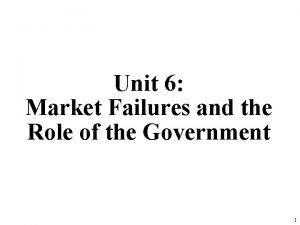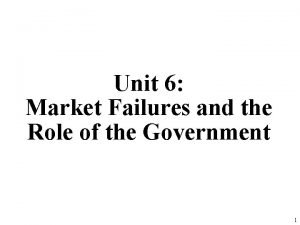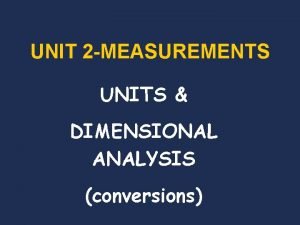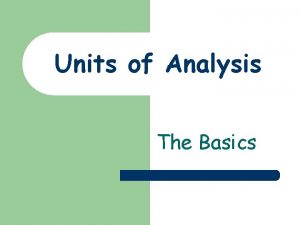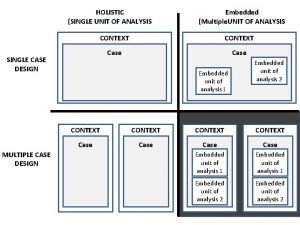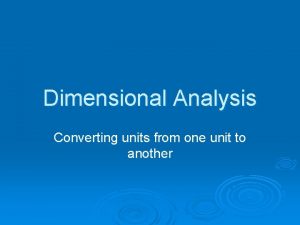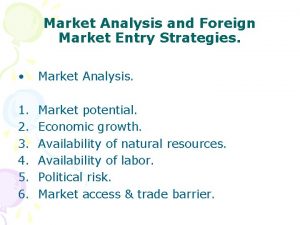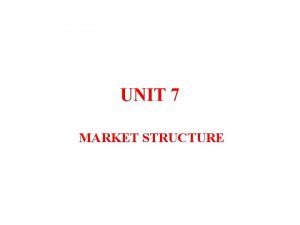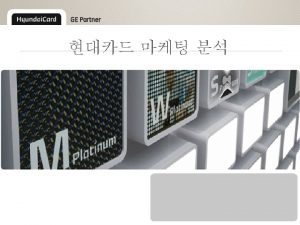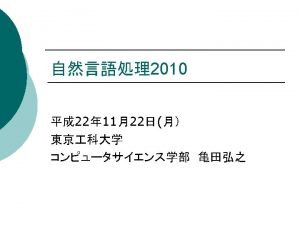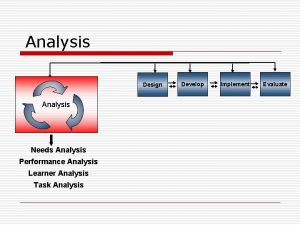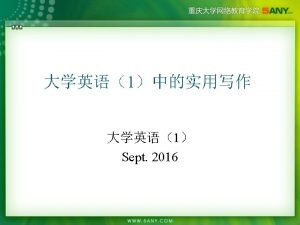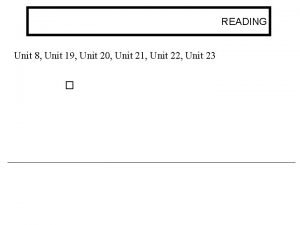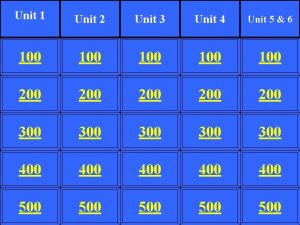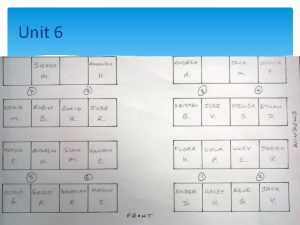UNIT 8 MARKET ANALYSIS MARKET A market is




















- Slides: 20

UNIT - 8 MARKET ANALYSIS

MARKET A market is a system by which buyers and sellers bargain for the price of a product, settle the price and transact their business – buy and sell a product. Personal contact between the sellers and buyers is not necessary.

Characteristics of Market ØTHE NUMBER AND SIZE DISRIBUTION OF SELLERS ØTHE NUMBER AND SIZE DISTRIBUTION OF BUYERS ØPRODUCT DIFFERENTIATION ØCONDITION OF ENTRY AND EXIT

Market situation Perfect competition Imperfect competition Monopoly Monopolistic, oligopoly, duopoly, bilateral monopoly, monopsony, duopsony, oloigopsony.

Market structure No. of firms & degree of product differentiation Perfect competition Large no. Identical product Nature of industry Control over price Methods of marketing Agriculture product none Market exchange Imperfect competition monopolistic Many firms with real product diff. FMCG, electronics some Competitive advertiseme nt, quality oligopoly Few firms, no product diff. Aluminium, steel, cigarettes, cars etc. some Competitive advertiseme nt, quality Monopoly Single producer without close substitute Indian Railways considerable Promotional advertising if supply is large

Perfect competition ØExistence of very large number of buyers and sellers ØHomogenous product ØFree entry and free exit of firm ØExistence of single price ØPerfect knowledge of market ØFull and unrestricted competition ØNo government intervention ØNormal profit

Price – output determination under perfect condition Price in Rs. Demand in units Supply in units State of market Pressure on price 10 1000 9000 S>D ↓ 8 3000 7000 S>D ↓ 6 5000 S=D ↔ 4 7000 3000 S<D ↑ 2 9000 1000 S<D ↑

EQUILIBRIUM OF COMPETITIVE FIRM IN THE SHORT – RUN : Ø SUPER NORMAL PROFIT Ø LOSS

MONOPOLY ØAnti-thesis of competition ØExistence of single seller ØAbsence of substitute ØControl over supply ØPrice maker ØEntry barriers

ØFirm and industry is same ØExistence of super normal profit

CAUSES OF MONOPOLY ØGovernment may grant a license to any particular person or a particular group for operating public utilities like Railways. ØProducers may possesses certain rare raw material or patent right or secret methods of production. ØThe necessities of having huge investment or large scale of production.

PRICE – OUTPUT DETERMINATION IN SHORT- RUN ØSuper normal profit ØNormal profit Øloss IN LONG - RUN ØSuper normal profit

PRICE DISCRIMINATION Price discrimination means selling the same or slightly differentiated product to different sections of consumers at different prices. When consumers are discriminated in regard to prices charged from them. It is called price discrimination.

Kinds of price discrimination ØDiscrimination of the first degree ØDiscrimination of the second degree ØDiscrimination of the third degree

BASIS OF PRICE DISCRIMINATION ØPersonal differences ØPlace ØDifferent uses of the same commodity (consumption of lighting) ØTime ØDistance ØSpecial orders ØNature of product ØQuantity of purchase

ØGeographical area ØSpecial classification of consumers ØAge ØPreference or brands ØSex ØPeak and off season

MONOPOLISTIC COMPETITION ØExistence of a large number of firm ØFree entry & exit of firm. ØElement of competition ØNon-price competition ØPreference to consumers ØProduct differentiation

PRICE – OUTPUT DETERMINATION IN SHORT- RUN ØSuper normal profit ØNormal profit Øloss IN LONG - RUN ØNormal profit

OLIGOPOLY COMPETITION ØInterdependence ØConflicting attitude of firm ØElement of competition ØPrice rigidity ØAggressive or defensive marketing methods ØConstant struggle ØSmall number of large firm

PRICE – OUTPUT DETERMINATION ØIndependent pricing ØPricing under collusion ØPrice leadership Kinked demand curve (Sweezy’s model) It does not deal with price & output determination. Once a price quantity determined, an oligopoly firm does not find it profitable to change its price even if there is a change in cost of production.
 Unit 10, unit 10 review tests, unit 10 general test
Unit 10, unit 10 review tests, unit 10 general test Market follower
Market follower Positioning and targeting
Positioning and targeting Surplus keuangan adalah
Surplus keuangan adalah Right triangle trigonometry
Right triangle trigonometry Si unit to english unit
Si unit to english unit Unit test review algebra 2
Unit test review algebra 2 Contoh soal perhitungan unit cost rumah sakit
Contoh soal perhitungan unit cost rumah sakit Unit process and unit operation
Unit process and unit operation Difference between unit process and unit operation
Difference between unit process and unit operation Setiap unit akuntansi dianggap sebagai unit yang mandiri
Setiap unit akuntansi dianggap sebagai unit yang mandiri Unit 5 the resource market
Unit 5 the resource market Unit 6 market failures and the role of the government
Unit 6 market failures and the role of the government Floating storage and regasification unit market
Floating storage and regasification unit market Unit 9 raising finance
Unit 9 raising finance Unit 6 four market failures
Unit 6 four market failures Dimensional analysis formula
Dimensional analysis formula Ounce and pounds
Ounce and pounds Units of analysis
Units of analysis Unit of analysis
Unit of analysis Dimensional analysis converting one unit to another
Dimensional analysis converting one unit to another












